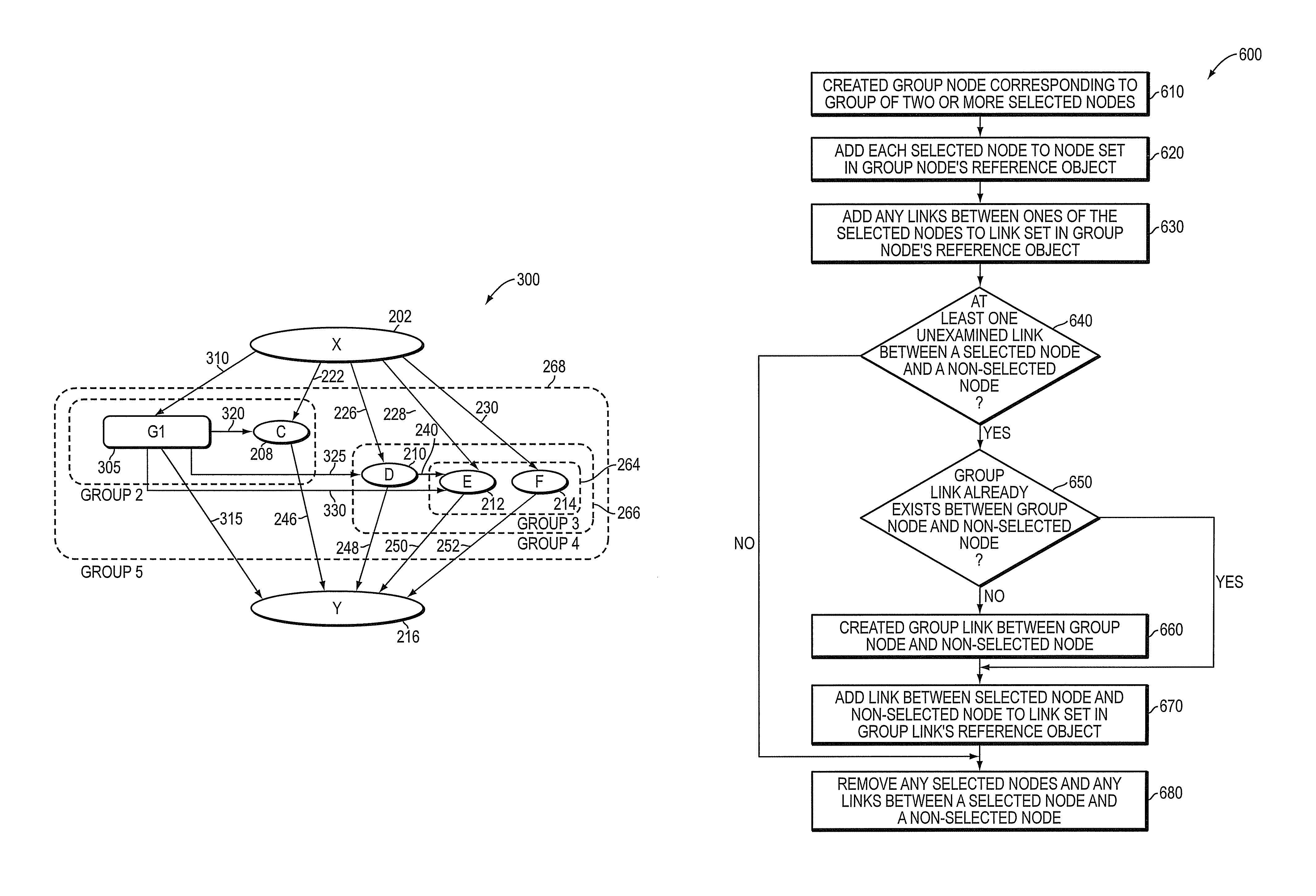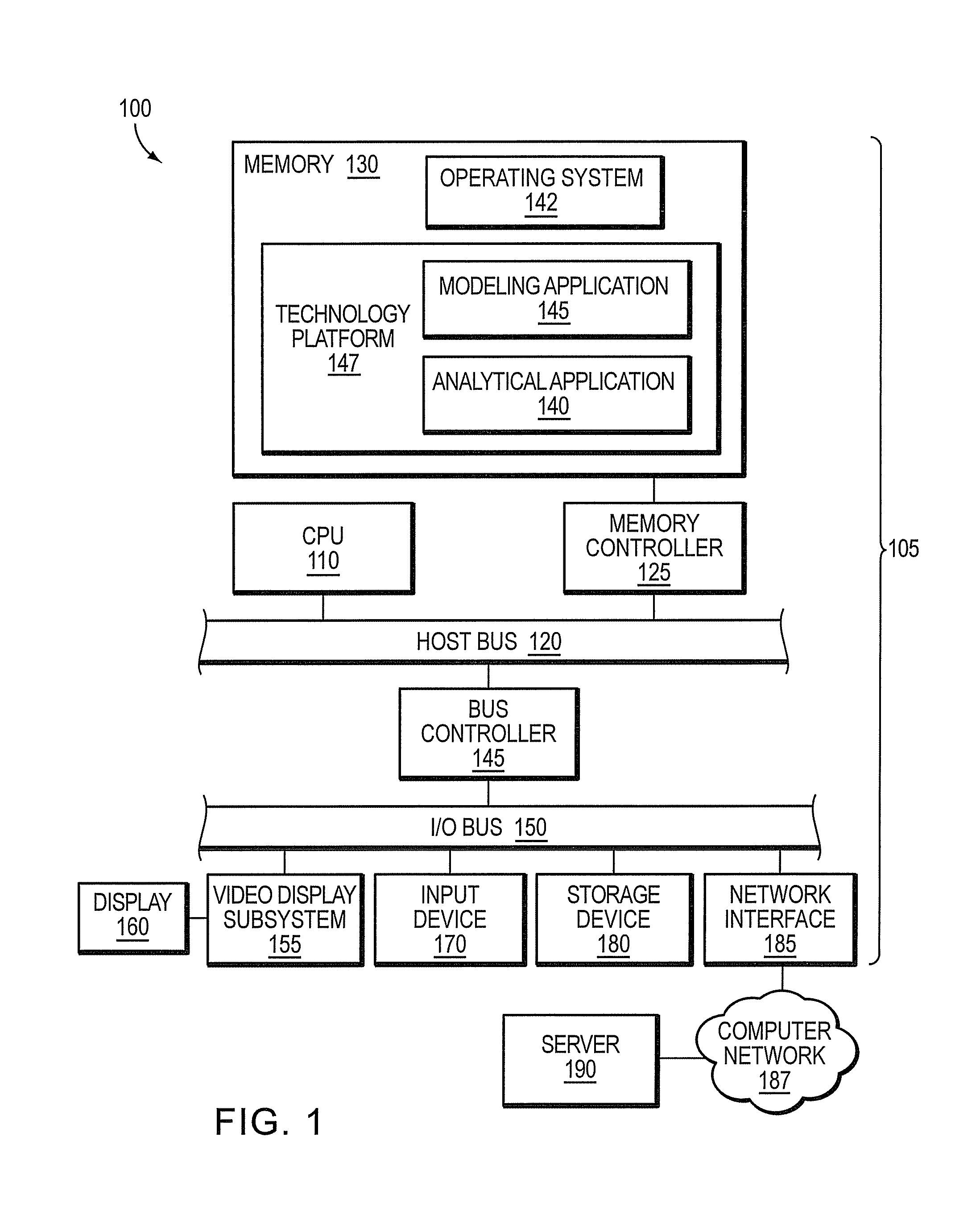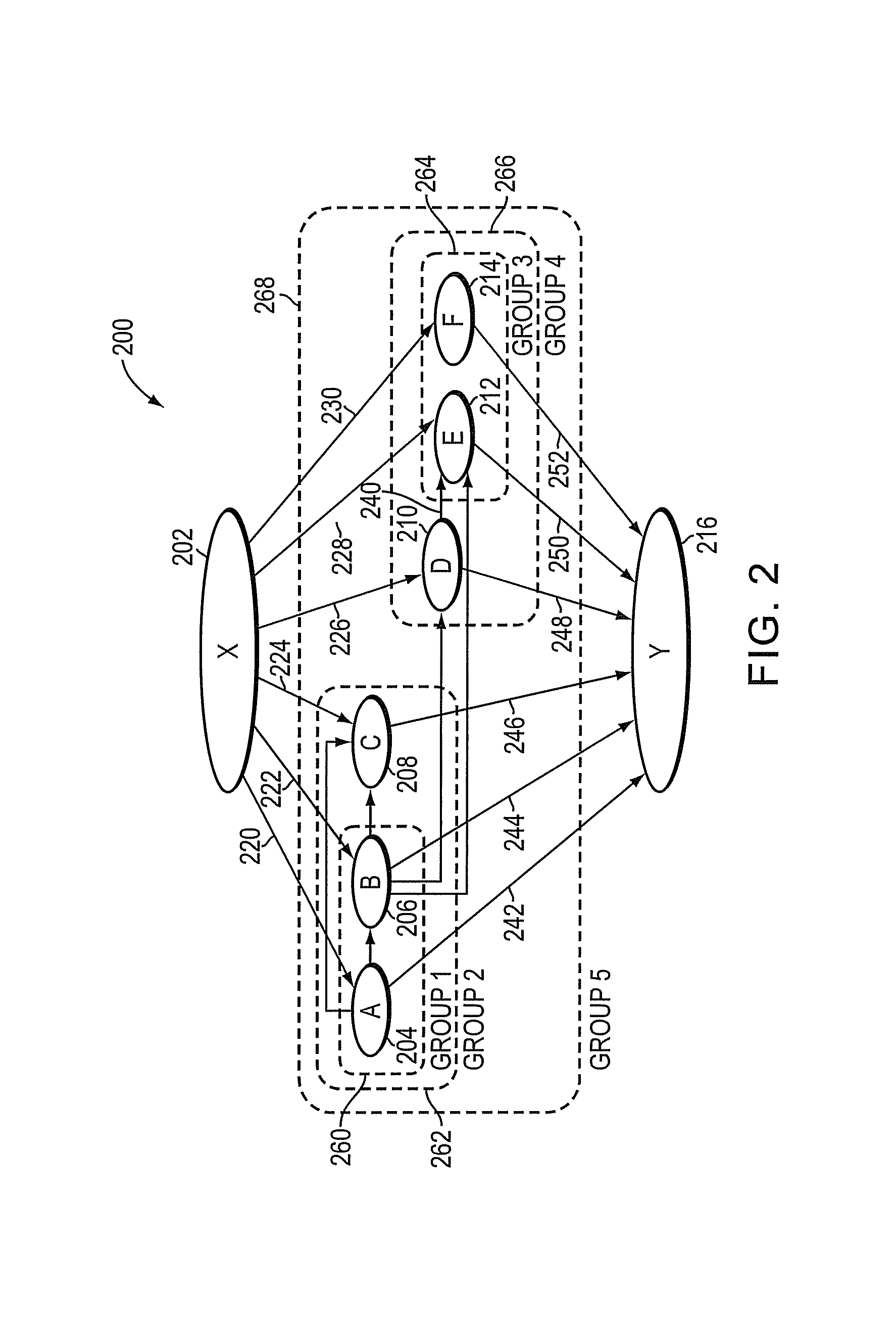System and method for simplifying a graph'S topology and persevering the graph'S semantics
a graph and graph semantic technology, applied in the field of computer-aided design, can solve the problems of user simply being overwhelmed by the amount of information presented, user may easily consume all the semantics being conveyed, and difficulty in consuming all the semantics of the graph, so as to achieve more granular representation, simplify the graph, and restore the graph
- Summary
- Abstract
- Description
- Claims
- Application Information
AI Technical Summary
Benefits of technology
Problems solved by technology
Method used
Image
Examples
Embodiment Construction
[0034]FIG. 1 is a schematic block diagram of an example computer system 100 including an example computer 105 (e.g., a desktop computer) interconnected to a server 190, in which at least some of the presently described techniques may be employed. The computer 105 includes at least one central processing unit (CPU) 110 coupled to a host bus 120. The CPU 110 may be any of a variety of commercially available processors, such as an Intel x86 / x64 processor, or another type of processor. A volatile memory 130, such as a Random Access Memory (RAM), is coupled to the host bus 120 via a memory controller 125. The memory 130 is adapted to store at least a portion of an operating system 142 while the computer 105 is operating.
[0035]In addition, the memory 130 may store portions of other software, including a including portions of a modeling application 145, and in some cases, one or more analytical applications 140 operating within a technology platform 147. The modeling application 145 may ma...
PUM
 Login to View More
Login to View More Abstract
Description
Claims
Application Information
 Login to View More
Login to View More - R&D
- Intellectual Property
- Life Sciences
- Materials
- Tech Scout
- Unparalleled Data Quality
- Higher Quality Content
- 60% Fewer Hallucinations
Browse by: Latest US Patents, China's latest patents, Technical Efficacy Thesaurus, Application Domain, Technology Topic, Popular Technical Reports.
© 2025 PatSnap. All rights reserved.Legal|Privacy policy|Modern Slavery Act Transparency Statement|Sitemap|About US| Contact US: help@patsnap.com



